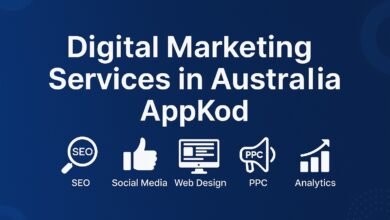What is Digital Marketing? A Complete Guide to Growing Your Business Online
A Complete Beginner’s Guide to Online Success in the Digital Era

Introduction
In today’s fast-paced, internet-driven world, the question “What is digital marketing?” is more relevant than ever. Digital marketing refers to the use of digital channels and platforms to promote products, services, or brands to a targeted audience. Unlike traditional marketing, which relies on print or television, digital marketing allows businesses to reach global audiences instantly and effectively.
From startups to multinational companies, digital marketing is an essential part of any marketing strategy. Whether through SEO, social media, email, or paid ads, businesses use these tools to increase visibility, generate leads, and convert prospects into loyal customers.
What is Digital Marketing?
Definition and Core Concept
Digital Marketing, also known as online marketing or internet marketing, is a form of advertising that uses the internet and digital technologies such as computers, smartphones, and other digital media to promote and sell products or services.
Why It Matters Today
Digital marketing allows for real-time interaction, detailed performance tracking, and precise audience targeting, making it one of the most powerful tools in modern marketing.
Types of Digital Marketing
1. Search Engine Optimization (SEO)
SEO involves optimizing your website to rank higher in search engine results like Google. By improving on-page SEO, technical SEO, and off-page SEO through backlinks, meta tags, XML sitemaps, and more, you increase your organic traffic and visibility.
2. Content Marketing
Content marketing focuses on creating valuable and relevant content like blog posts, videos, infographics, and podcasts. This builds trust and helps with lead generation and customer retention. Using a content calendar and evergreen content, businesses can maintain consistent engagement.
3. Social Media Marketing (SMM)
SMM leverages platforms like Facebook, Instagram, LinkedIn, and TikTok to connect with audiences. It includes strategies like influencer marketing, UGC (user-generated content), and community management to boost brand awareness and engagement.
4. Email Marketing
Email campaigns involve sending personalized messages to a targeted email list to nurture leads or announce new offers. With tools like automation, drip campaigns, and CTR tracking, email marketing offers a high ROI and builds customer loyalty.
5. Pay-Per-Click (PPC) Advertising
PPC includes paid ads on platforms like Google Ads or Bing Ads, where you pay only when someone clicks. With CPC (cost-per-click), CPA (cost per acquisition), and display ads, this form of online advertising is ideal for quick traffic and testing new offerings.
6. Affiliate and Referral Marketing
This involves partnering with others who promote your product in exchange for a commission. It’s performance-based and can rapidly expand your reach through affiliate links and partner programs.
7. Analytics and Performance Tracking
Using tools like Google Analytics, marketers can measure traffic sources, conversion rates, bounce rates, and other KPIs (key performance indicators). This enables better ROI (return on investment) and strategy refinement.
Benefits of Digital Marketing
Wider Reach
You can connect with global customers at any time, breaking the limits of geography.
Cost-Effective
Compared to TV or print, digital channels are cheaper and more measurable.
Targeted Audience
Using data, businesses can target users based on behavior, demographics, or preferences.
Real-Time Data and Analytics
You get immediate feedback on what’s working, enabling quick improvements.
Digital Marketing Strategies That Work
Inbound vs. Outbound Marketing
-
Inbound marketing focuses on drawing customers in using valuable content.
-
Outbound marketing involves reaching out to potential customers directly (like cold emails or paid ads).
Marketing Automation
This allows marketers to automate tasks like email sequences, lead scoring, and campaign tracking—improving efficiency and reducing manual work.
Growth Hacking
A method that combines creativity, data, and experimentation to find quick and cost-effective ways to grow a business.
Best Practices in Digital Marketing
-
Conduct thorough keyword research.
-
Focus on conversion rate optimization (CRO).
-
Use high-quality visuals and compelling storytelling.
-
Leverage video marketing and podcasts for engagement.
-
Implement retargeting ads to bring users back.
Useful FAQ
What is the difference between SEO and SEM?
SEO is free and focuses on organic traffic, while SEM includes paid ads to gain instant visibility in search engines.
How do I get started with digital marketing?
Start with defining your goals, understanding your audience, then choose the right channels (like SEO, email, or social media).
Is digital marketing good for small businesses?
Absolutely. It allows small businesses to compete with bigger brands using targeted marketing and cost-effective strategies.
How can I measure digital marketing success?
Use tools like Google Analytics to monitor metrics such as conversion rate, traffic sources, and page views.
Conclusion
Understanding what digital marketing is and how it works gives you the edge to grow your business online. With strategies like SEO, social media marketing, email campaigns, and PPC ads, you can increase visibility, build trust, and drive conversions.
In today’s digital age, whether you’re a freelancer, entrepreneur, or business owner, mastering the art of online marketing is no longer optional—it’s essential.


